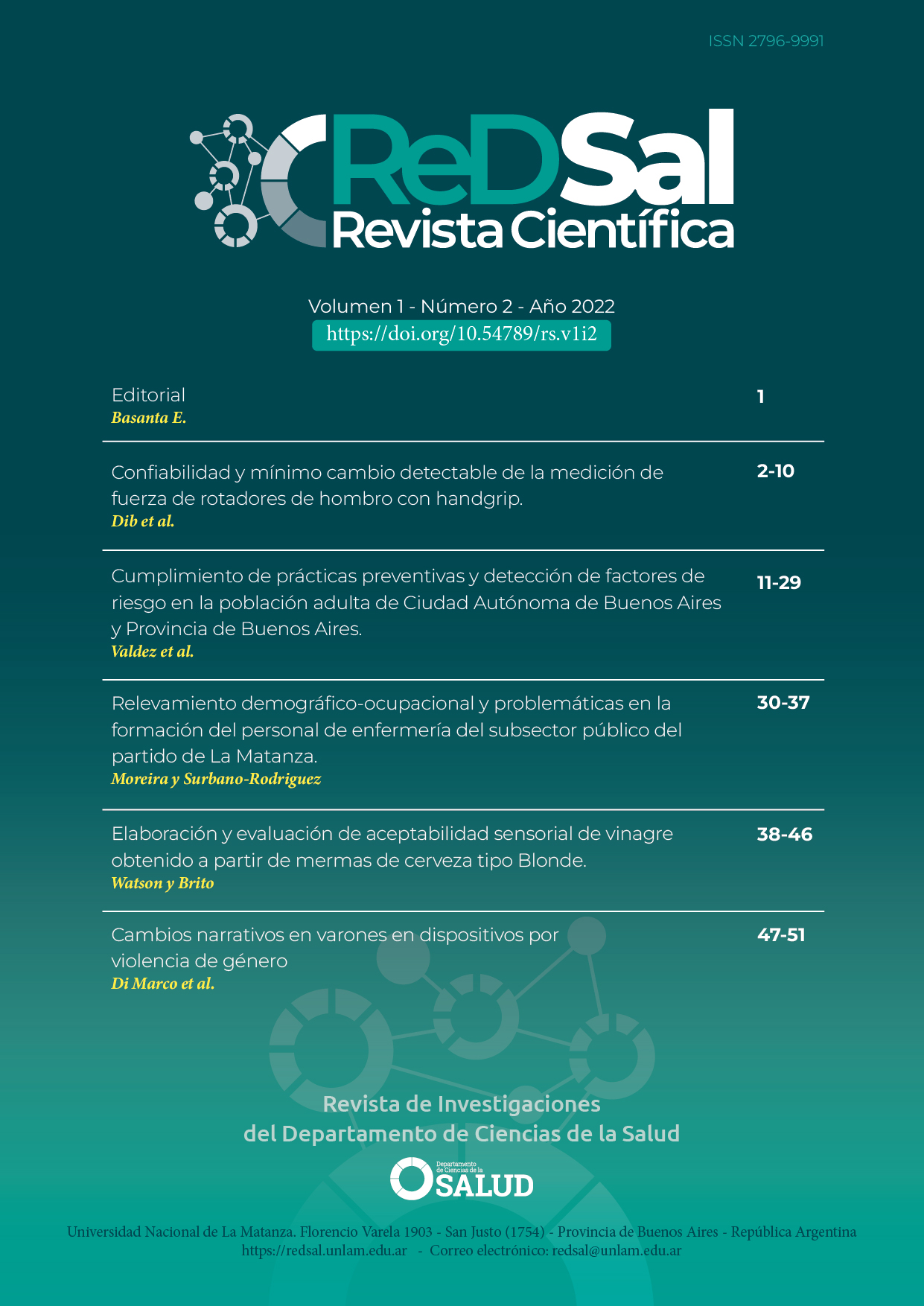Demographic-occupational survey and problems in the training of nursing staff in the public subsector of the district of La Matanza.
DOI:
https://doi.org/10.54789/rs.v1i2.11Keywords:
nursing personnel, continuing nursing education, continuing education, demographics, nursing research, instruction for nursesAbstract
Objective: To identify the demographic-occupational characteristics and continuous education problems of the nursing personnel in the public subsector of La Matanza district between the years 2017-2018.
Material and methods: A quantitative-qualitative, cross-sectional, non-experimental design with methodological triangulation was used, (interviews and surveys). The sample was non-probabilistic for convenience.
Results: A total of 123 units were included. Female gender represented 80.24% (n=94) of the sample and the male gender 18.80% (n=22), with a mean age of 39.62 years and 49.59% (n=61) were nurses. The mean job seniority was 10.40 years and 70.49% (n=86) worked up to 40 hours per week. 78.15% (n=93) had an income below the basic family basket. As regards training, 76.03% (n=92) participated in some type of continuous education program in the last three years, even though 73.50% (n=86) expressed difficulties in sustaining training, such as family or personal occupations and economic
problems.
Conclusion: The demographic characterization is largely similar to that found in other sources. The main differences found are younger age and higher level of training. In order to offer continuing education to meet the needs of the nursing personnel, we conclude that it is relevant to become aware of the topics of interest, the type of program they prefer and access difficulties they encounter.
References
Maimone SM. Análisis de factores personales, profesionales y motivacionales en la participación en educación continua en enfermeros de una institución de la Ciudad de Bs.As. [Internet]. 2015 [consultado el día 14 de sept 2022] Disponible en: http://trovare.hospitalitaliano.org.ar/descargas/tesisytr/20160812134703/tesis-maimone-stella-maris.pdf
Organización Mundial de la Salud. Situación de la enfermería en el mundo [Internet]. 2020 [consultado el día 14 de sept 2022] Disponible en: https://apps.who.int/iris/bitstream/handle/10665/331675/9789240003392-spa.pdf.
Aguirre Raya, Dalila. Satisfacción laboral de los recursos humanos de enfermería: factores que la afectan [Internet]. Rev Haban Cienc Méd. 2009 [consultado el día 14 de sept 2022] 8(4):0-0. Disponible en: http://scielo.sld.cu/pdf/rhcm/v8n4/rhcm21409.pdf
Ministerio de Salud de la Provincia de Buenos Aires. Relevamiento RRHH de enfermería. Evaluación de la carrera de enfermería [Internet]. 2017 [consultado el día 14 de sept 2022] Disponible en: https://www.argentina.gob.ar/sites/default/files/desarrollo-y-capital-humano-salud.pdf
Schneider M, Good S. Afrontar los retos de la formación del personal de enfermería. Nursing [Internet]. 2019;36(2): 47-48. [consultado el día 14 de sept 2022] Disponible en: https://www.elsevier.es/es-revista-nursing-20-pdf-S0212538219300445
Trevizan MA, Costa Mendes IA, Mazzo A, Arena Ventura CA. Inversiones en activos humanos de enfermería: educación y mentalidades para el futuro [Internet].; 2010; 18(3). [consultado el día 14 de sept 2022] Disponible en: https://www.scielo.br/j/rlae/a/stswbh7LTHKNXxmZ7YJ6XYP/?format=pdf&lang=es

Downloads
Published
How to Cite
Issue
Section
License
Copyright (c) 2022 ReDSal

This work is licensed under a Creative Commons Attribution 4.0 International License.








